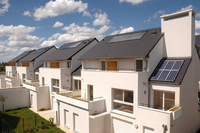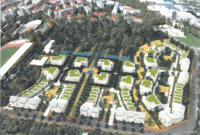The SNI-EVE quotation: The Marking system for building Environmental Impact
The SNI naturally turned towards CSTB in mid-2007, when it wanted to set up a marking system to characterise the environmental impact of its buildings. "The first phase of this project was completed in September this year, says Sophie Cuenot, CSTB mission leader. During one year of work, we created an environmental marking tool for all new construction programs for the SNI group. It fixes objectives to be achieved in terms of environmental performance at the building design stage and it is used to make regular evaluations to help with the design and for making choices of products and systems, from the preliminary design phase to the delivery of homes."
At the request of SNI, the environmental mark produced is the result of an aggregation of four indicators. This aggregation is the result of weighting of indicators done by the SNI, reflecting its challenges. Indicators deal with the management of water and energy, the health impact of construction products and the amount of charges paid by tenants. Each of these indicators itself includes different data. Thus, for water, the presence of water miser equipment, recovery of rainwater and retention of water on the parcel are taken into account. A mark of between 1 and 10 is then assigned to the building project concerned. It characterises its performance with regard to a classical reference project.
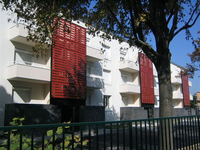
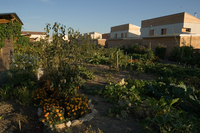
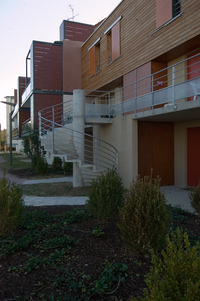
Energy, water, health and rental charges
The same marking principle was used for the other three indicators. Thus, the measurement of VOC and formaldehyde emissions from the products used characterises the health quality of the construction. The estimate for charges takes account of energy and water expenses. "Concerning the energy aspect, we both consider quantitative aspects such as building consumption, and qualitative aspects, says Sophie Cuenot. These deal with emissions of greenhouse effect gases, sulphur dioxide, radioactive waste generated by electricity consumption, etc. Environmental impacts of construction products are also taken into account. We consider data contained in the environmental and health declaration sheets (FDES) in the INIES (Informations sur l’impact environnemental et sanitaire – Information about Environmental and Health impact) base to include "total embodied" energy and other environmental impacts related to the manufacture of construction products."
Two first environmental marking tests took place, one on a project at the DCE (contractor call for bid file) stage in Grenoble (Isère department), and the other on an operation in the APS (preliminary design phase) in Besançon (Doubs department). Already, the SNI has asked CSTB to adapt the indicators produced for new real estate programs so as to apply them to renovations of existing housing. Eventually, this type of service could be adopted for any type of building, knowing that operators are capable of modifying each indicator to match their own criteria. This offers genuine "environmental" help to managers of housing estates, owners and project managers for the design of their structures.
A decision making assistance tool
Alain Cauchy is Director of the SNI group’s housing stock. "After our environmental charter was set up at the beginning of 2007, we wanted to quickly obtain an indicator that could specifically measure the results of our efforts in terms of sustainable development. This project applied firstly to new real estate programs, and it was then extended to include existing building rehabilitation operations. But caution! It does not replace existing certifications. This is a decision making assistance tool that takes account of energy, water and material aspects. Various discussions with CSTB have convinced us that CSTB is in the best position to satisfy our needs. We relied upon its skills to finalise and refine our specification and the first "deliverables" that were provided to us confirmed our expectations. We will now do what we can to make the tool produced easier to use. Furthermore, we think of creating a database into which we will input information acquired as our construction programs progress, in order to capitalise on our experience. At the beginning of 2009, this indicator will be used systematically and provided to project managers. These project managers can then propose better environmental solutions to us, depending on the chosen requirements."
